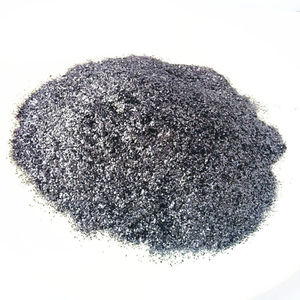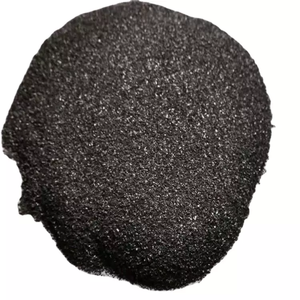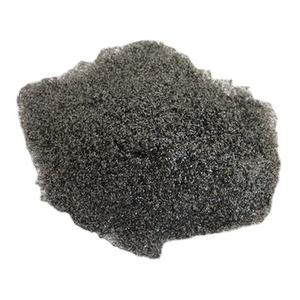Overview of MWCNT Multi Walled Carbon Nanotubes for Conductive Carbon Nanotube CNT Materials
Conductive carbon black is a specialized form of carbon black, engineered specifically to enhance the electrical conductivity of materials it is incorporated into. Unlike regular carbon black, which is primarily used as a reinforcing filler and pigment, conductive carbon black features a unique particle structure and surface chemistry that facilitates electron flow, making it indispensable in applications requiring static dissipation, electrostatic control, or improved performance in electronic and electrical devices.
Features of MWCNT Multi Walled Carbon Nanotubes for Conductive Carbon Nanotube CNT Materials
Enhanced Conductivity: Provides a network for electron movement within a material, turning an insulator into a conductor or semi-conductor.
Low Loading Levels: Effective at low concentrations, minimizing impact on the host material's properties, such as viscosity, weight, and color.
Particle Size and Structure: Specifically engineered with smaller particle sizes and higher structure, optimizing conductivity pathways.
Stability: Resistant to chemical and environmental degradation, ensuring consistent performance over time and in varying conditions.
Versatility: Compatible with a wide range of matrices, including polymers, resins, adhesives, and coatings.

(MWCNT Multi Walled Carbon Nanotubes for Conductive Carbon Nanotube CNT Materials)
MWCNT (Multi-Wall Carbon Nanotubes) are a type of carbon nanotube that consist of multiple layers of carbon atoms packed closely together, resulting in a highly conductive structure. The conductive properties of MWCNTs can be influenced by various parameters such as the size and composition of the nanotubes, the temperature, and the presence of impurities. Here are some of the commonly used parameter for determining the performance of MWCNT materials: 1. Nanotube diameter: The diameter of the MWCNTs is an important parameter that affects their electrical conductivity. Smaller diameter typically results in higher conductivity, but at the expense of mechanical weakness and lower resistance to bending and deformation. 2. Carbon content: The amount of carbon atoms present in the MWCNTs plays a significant role in determining their electronic properties. High-carbon content generally leads to higher conductivity, but can also increase the brittleness of the nanotubes. 3. Temperature: The temperature at which MWCNTs are exposed to changes can affect their transport properties, including both conductivity and resistivity. Generally speaking, increasing the temperature increases the conduction rate and improves the transparency of the nanotubes, while decreasing the temperature can reduce the resistance and improve the stability of the nanotubes. 4. Impurities: The presence of impurities in the MWCNTs can significantly affect their electrical properties. For example, the introduction of small impurities into the nanotubes can cause the formation of defects, leading to reduced electrical conductivity. 5. Fabrication method: The fabrication method used to produce MWCNTs can also have a significant impact on their performance. Techniques such as chemical vapor deposition (CVD), electrospinning, or sonochemical methods can all influence the quality and purity of the MWCNTs produced. Overall, the design and fabrication of MWCNT materials require careful consideration of these various parameters to optimize their electrical conductivity and other properties.

(MWCNT Multi Walled Carbon Nanotubes for Conductive Carbon Nanotube CNT Materials)
Applications of MWCNT Multi Walled Carbon Nanotubes for Conductive Carbon Nanotube CNT Materials
Antistatic Materials: In plastics, textiles, and packaging to prevent sparks, protecting sensitive electronic components.
Electromagnetic Interference (EMI) Shielding: In coatings and adhesives to shield electronic devices from external electromagnetic interference.
Fuel Cells and Batteries: As a conductive additive in electrodes, improving ion flow and battery performance.
Rubber and Plastic Compounds: In cable insulation, gaskets, and seals where conductivity is required for safety or functionality.
Ink and Coatings: For conductive printing in RFID tags, smart packaging, and printed electronics.
Graphite-Corp is a trusted global chemical material supplier & manufacturer with over 12-year-experience in providing super high-quality graphite powder and graphene products.
The company has a professional technical department and Quality Supervision Department, a well-equipped laboratory, and equipped with advanced testing equipment and after-sales customer service center.
If you are looking for high-quality graphite powder and relative products, please feel free to contact us or click on the needed products to send an inquiry.
L/C, T/T, Western Union, Paypal, Credit Card etc.
It could be shipped by sea, by air, or by reveal ASAP as soon as repayment receipt.
FAQs of MWCNT Multi Walled Carbon Nanotubes for Conductive Carbon Nanotube CNT Materials
Q: How does MWCNT Multi Walled Carbon Nanotubes for Conductive Carbon Nanotube CNT Materials differ from regular carbon black? A: MWCNT Multi Walled Carbon Nanotubes for Conductive Carbon Nanotube CNT Materials is designed with specific properties to enhance electrical conductivity, whereas regular carbon black is mainly used for reinforcement and pigmentation without a primary focus on conductivity.
Q: What factors influence the conductivity of a material when using MWCNT Multi Walled Carbon Nanotubes for Conductive Carbon Nanotube CNT Materials? A: Particle size, structure, concentration, and dispersion quality significantly impact conductivity. Smaller particles and better dispersion lead to more efficient electron paths and increased conductivity.
Q: Can MWCNT Multi Walled Carbon Nanotubes for Conductive Carbon Nanotube CNT Materials be used in any polymer? A: While it is versatile, compatibility tests are necessary to ensure it works effectively with each specific polymer type, as certain polymers may require customization for optimal performance.
Q: Is MWCNT Multi Walled Carbon Nanotubes for Conductive Carbon Nanotube CNT Materials safe to handle? A: Like other carbon blacks, it is generally safe when handled properly. However, appropriate dust control measures should be in place due to its fine particle size, which can become airborne and pose a respiratory risk.
Q: Does adding MWCNT Multi Walled Carbon Nanotubes for Conductive Carbon Nanotube CNT Materials change the mechanical properties of a material? A: At low loading levels, the impact on mechanical properties is usually minimal. However, at higher concentrations required for certain high-conductivity applications, changes in properties such as stiffness, elongation, and color may occur.

(MWCNT Multi Walled Carbon Nanotubes for Conductive Carbon Nanotube CNT Materials)
Copyright © 2024 By Graphite-Corp